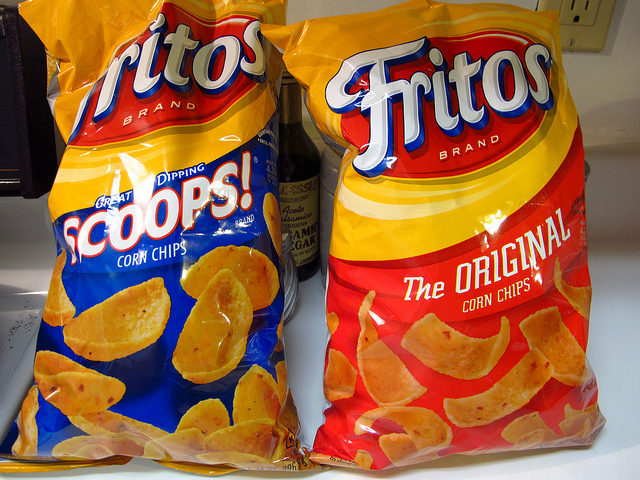The Latino Inventor of Fritos That No One Remembers

By Eduardo Diaz, Smithsonian Latino Center
Innovation is, among other things, the act of introducing something new. In 1932, with this country in the throes of the Great Depression, a restless C.E. Doolin walked into a San Antonio gas station and, according to a National Public Radio story (Hidden Kitchens, 2007), “found a Mexican man making an extruded corn chip out of masa, frying it and selling little bags… They were fritos,’little fried things’ — the beach food of Mexico.” Doolin bought the recipe and 14 customers from the man and began to make and distribute the fried corn chips from his kitchen with the help of his family. The rest, as they say, is history. In 1961, Doolin joined forces with Herman Lay, history’s recognized inventor of the potato chip from Nashville, to form Frito-Lay, which, in 1965, merged with Pepsico.
Like millions around the world, I love my corn fried. Not surprising, as I descend from the people of the corn. You could say it’s in my blood. Maíz, or Maize, is a pre-historical grain plant domesticated by indigenous peoples in Mesoamerica. Importantly, the word derives from the Taíno, Mahiz. The Taíno are the Caribbean’s largest indigenous community, which met the first European incursions into the region. From that encounter, the rest is also quite a history.
As a kid growing up in Southern California I remember visiting Disneyland and heading to Casa de Frito for my fried corn fix. Always the innovator, in Casa de Frito, C.E. Doolin created the precursor of the fast food restaurant, featuring a hybrid between hamburgers and “Mexican Food.” I didn’t think much of all of this until I entered San Diego State in 1968 and became a Chicano activist. We fought a lot of battles, like the establishment of Chicano Studies at the university, the creation of Chicano Park in San Diego’s Logan Heights barrio and, yes, the retirement, in 1971, of the Frito Bandito, the stereotypical cartoon character Frito-Lay created to promote those “deeeleeecious” Fritos.
So, who invented the Frito anyway? Practically every reference source gives C.E. Doolin the credit. What I want to know, however, is who was the “Mexican man” who sold his recipe to Doolin? It strikes me that he is the inventor, right? But I challenge you to discover his name and how he came to invent a product. Surely, he knew of tostadas, the tortilla chip native to his country. Unlike the corn chip (Frito), the tostada is the product of nixtamalization, a process where raw corn is mixed with quicklime and hulled. Nixtamal, from the Nahuatl nixtamalli, is the core ingredient of the tamal, or tamale. The Frito, on the other hand, fries extruded corn. Extrusion is a process where the corn kernel is degermed and dry mulled to form the chip. Most nutritionists will tell you that extrusion degrades the value of corn, while nixtamalization improves its nutritional value, to say nothing of what it does for maximizing aroma and taste. If you’ve ever participated in atamalada, a family gathering necessary to turnout dozens of tamales, you’ll catch my drift.
Innovation happens when someone improves on or makes a significant contribution to a product or process. Not an inventor, C.E. Doolin was certainly an innovator, a darling of an industrious and industrializing U.S. Realizing that he had a winner in his hand with the Frito, Doolin quickly attracted the capital to purchase the machinery, conveyor belts, labor, patents, etc. to ensure necessary production levels. Obviously, he was also very savvy at branding and marketing. (Readers may also be interested to learn that he was a vegetarian and consumed little salt; Fritos are not exactly the ticket to a healthy, low-salt diet.)
One wonders what would have happened had the “Mexican man” had the same access to capital to monetize his invention, something that would have been hard to imagine at a time when Jim Crow-like environment made this kind of mass market entrepreneurship nearly impossible for a Mexican in 1930s San Antonio. I imagine there are similar stories of similarly disadvantaged inventors of color. In examining the history of innovation in this country, I think it important dig deep and tell the whole story.
Eduardo Díaz is the director of the Smithsonian Latino Center and a 30-year veteran of arts administration. The Latino Center works to increase and enhance Latino presence, research and scholarship at the Smithsonian Institution by sponsoring, developing and promoting exhibitions, collections, research and public programs that focus on the Latino experience. Díaz is an advisor to the Smithsonian’s Secretary and Under Secretary for History, Art and Culture as well as to Congress and other government agencies on a range of cultural development issues related to Latino communities in the United States and their impact on diverse countries of origin.
[Photo by I Believe I Can Fry]
